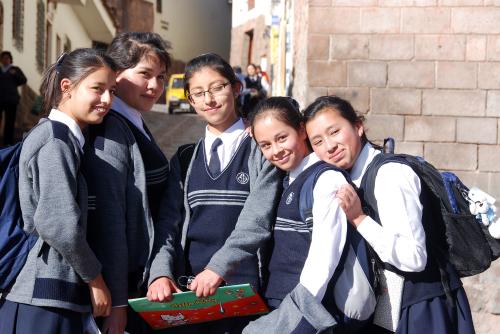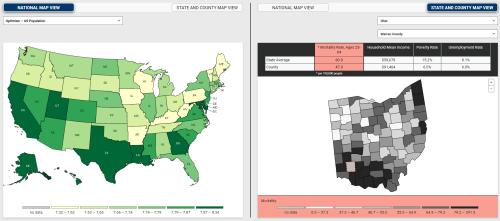Much of my recent work has focused on U.S. society’s crisis of despair and its role in premature mortality, in labor force drop out and lack of mobility, and in our increasingly divided politics. America is divided not only in terms of incomes and opportunities, but also in terms of hopes and aspirations for the future. These divisions are evident across the rich and the poor and across races, with low-income minorities much more optimistic about the future—and about the value of higher education—than are low-income whites.
COVID-19 worsened the already fragile state of our mental health—as evidenced by a rise in youth suicide and increases in overdoses among the middle aged, among other things. It also shook the already precarious labor market for low-skilled workers, youth particularly vulnerable. Perhaps the most difficult challenge, though, and the one we know least about, is restoring hope among populations where it has been lost. Without hope and a vision for the future, low-income youth in declining communities are unlikely to make the education and other investments necessary to participate in a rapidly changing labor market—such as in soft skills and in tech programming skills that do not require a college degree.
This is one area where we can learn from other countries, including those that are much less wealthy than we are. My recently published research in Peru, conducted jointly with Julia Ruiz Pozuelo, attempted to shed light on the role of hope and aspirations in generating better future outcomes for low-income youth. We conducted a panel study with adolescents (18-19 years at Wave 1 and 21-22 years old in Wave 2) in a poor and near-poor peri-urban neighborhood in Lima. We asked our young respondents about aspirations in three domains—education, occupation, and migration—and we collected extensive background information on their past experiences and their family and community support systems.
We found remarkably high levels of aspirations among our survey population, with over 80 percent of our respondents aspiring to complete university or postgraduate education. This is remarkable given that the parents of our respondents do not have tertiary education, and most are taxi drivers, carpenters, domestic servants, or informal sector merchants. At least half of the neighborhood still lacks full access to pavement and running water, while the other half has these amenities. There is also recently acquired access to a metro (within a 1- to 2-mile walk).
Our respondents’ aspirations are persistent over time, meanwhile, with half the sample keeping their aspirations constant three years later (and a quarter increasing them). These high aspirations resulted in better outcomes. Respondents with high aspirations in Wave 1 were more likely to have better educational and health-related outcomes, as measured by school enrollment, academic achievement, time allocated to school activities and professional development, and lower engagement in risky behaviors such as substance use and unsafe sex in Wave 2. This supports our (and others’) priors that individuals with high aspirations and/or hope for the future are more likely to invest in those futures as well as to avoid behaviors that are likely to jeopardize them.
There are some differences across the aspiration types, though, with educational aspirations most positively associated to human capital investments and negatively associated with risky behaviors. Migration aspirations, while linked to positive investments in human capital such as attaining higher grades, are also, rather surprisingly, associated with depressive symptoms and engaging in risky behaviors (both of which are positively associated. We do not have the data to explain this pattern, but we posit that at least some respondents may aspire to migrate in order to get away from these behaviors among their neighborhood peers.
Parents or non-family mentors also play an important role. Our interviews with those who work in this neighborhood and in Lima more generally suggest that there is a very strong shared belief in the importance of education among these parents—even though their own education levels are low—which in turn provides a support system for the young adults in our sample; 88 percent of our respondents report that their education is paid for by their parents.
Education levels in Peru are high enough to drive awareness of the increasing returns to higher versus secondary education. Yet our data also show that traits such as optimism, self-esteem, and internal locus of control play a role independently of that. Aspirations are persistent within respondents, with high aspirations remaining at the same levels over the three-year period for most of them. While three years is not a long-time frame, the late teens and early 20s are typically a time of many changes. As such, persistence in these critical years certainly suggests that aspirations are not just fleeting traits.
Our study of course has limitations. First, we look at the association between aspirations and future outcomes using observational evidence, and thus we are not claiming causality. The panel nature of the data, though, allows us to observe the same individuals over time, and thus to control for any unobserved time-invariant heterogeneity within individuals that may be correlated with our explanatory variables. Second, we do not have data on the aspirations of peers. This is particularly important given that adolescence is a time that young adults begin to place more value on what their peers think and do than on their parents’ views.
Our results suggest that increasing aspirations may be a potential policy lever to improve overall well-being and long-run outcomes, and there is evidence that interventions can alter aspirations. A study conducted in the Dominican Republic estimated that providing information on the returns to education (thus changing the perceived returns) increased completion of secondary education by 0.20–0.35 additional years. A study in Brazil found that exposure to soap operas with strong female role models has a significant effect in lowering birth rates, with the strongest effect among women from lower socioeconomic status. Haushofer and Fehr show that the provision of hope in very poor populations in Africa—via the gift of a cow or some other form of livestock—improves household outcomes the following year.
In the U.S., experimental research in homeless shelters in Trenton, New Jersey by Hall, Zhao, and Shafir found that those respondents who had been prompted to think of a time when they felt good about themselves scored higher in simple games than those respondents who did not receive a prompt. The driving channel in all these cases—as well as in other experiments—seems to be the provision of a hope channel where one previously did not exist.
While these studies cannot reveal how long the behavioral changes last, they are suggestive of a virtuous circle that can increase hope and aspirations and related behaviors. In addition, there is a growing body of evidence from the literature on well-being economics that shows that interventions to encourage deprived or isolated individuals to participate in community activities such as the arts or volunteering can significantly enhance their well-being and self-esteem.
While interventions for low-income youth must also encourage the acquisition of the skills necessary to participate in today’s labor market, bolstering self-esteem and hope for the future is an important part of the equation. Historically black colleges and universities (HBCUs), for example, which play an important role in the educational success of low-income minorities, not only provide education but the mentorship that is critical to success.
There is much more we need to know, both about the drivers of aspirations and how in-person and environmental factors interact in forming them, as well as about the consistency and duration of the channel from aspirations to better outcomes. We are fielding similar versions of our surveys in different cultural and population contexts (again with young adults) in low-income neighborhoods in St. Louis County, Missouri, with a view to better understanding the gaps in education beliefs across poor minorities and poor whites.
At this juncture, though, our findings suggest that hope and aspirations matter to actual outcomes. They are particularly important for deprived individuals who do not have the financial support and other advantages that make it easier for wealthier ones to make key investments in human capital. The precarious future faced by disadvantaged youth of all races in the U.S. makes it vital that we learn more about increasing hope and well-being as a lever to their investment in their own futures.
The Brookings Institution is committed to quality, independence, and impact.
We are supported by a diverse array of funders. In line with our values and policies, each Brookings publication represents the sole views of its author(s).









Commentary
Lessons for combating despair? Hope, aspirations, and the outcomes of young adults in Peru
February 1, 2021